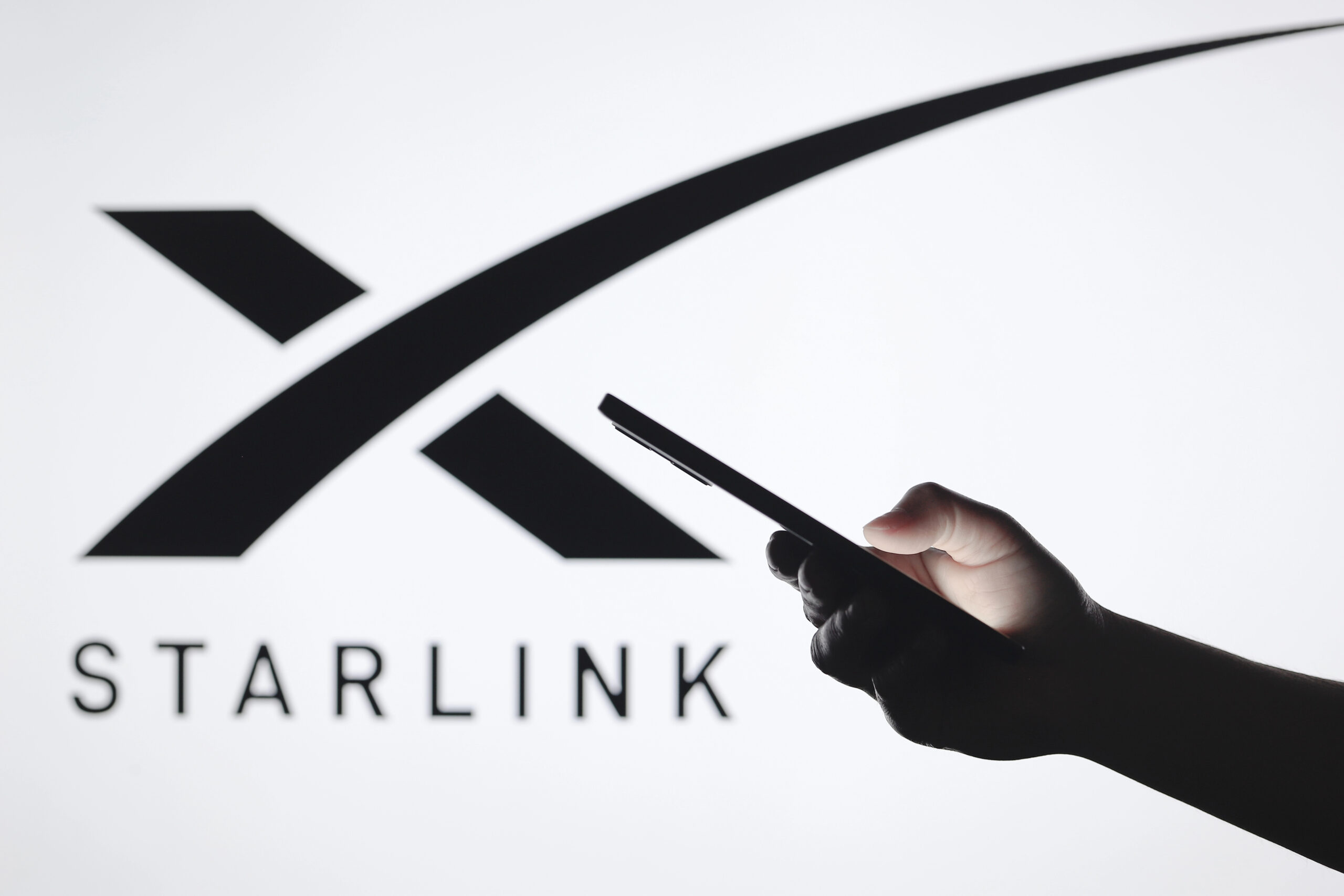As you explore the latest developments in India’s telecommunications landscape, you’ll find a groundbreaking partnership on the horizon. Bharti Airtel, a titan in Indian telecom, has joined forces with SpaceX’s Starlink to potentially transform connectivity across the nation. This alliance aims to harness Starlink’s cutting-edge satellite technology to bring high-speed internet to India’s most remote corners. However, before you can experience this revolutionary service, regulatory hurdles must be cleared. The collaboration between these industry giants promises to reshape India’s digital infrastructure, aligning with the government’s vision for a more connected future. Let’s delve into the details of this partnership and its implications for India’s technological advancement.
Airtel and SpaceX’s Starlink: A Game-Changing Partnership

Revolutionizing India’s Digital Landscape with Airtel and Starlink
The collaboration between Bharti Airtel and SpaceX’s Starlink marks a pivotal moment in India’s telecommunications history. This strategic alliance aims to harness the power of Starlink’s cutting-edge low Earth orbit satellite network, potentially transforming internet accessibility across the nation. By leveraging Airtel’s extensive retail network and Starlink’s innovative technology, this partnership promises to bridge the digital divide, especially in remote and underserved areas.
Airtel and SpaceX’s Starlink Expanding Connectivity to Underserved Regions
One of the most significant aspects of this partnership is its potential to reach areas where traditional internet infrastructure has struggled to penetrate. Starlink’s satellite internet technology could provide high-speed connectivity to rural communities, mountainous regions, and other hard-to-reach locations. This expansion aligns perfectly with the government’s Digital India initiative, fostering inclusive digital growth and empowering millions of citizens with improved access to online resources and services.
Empowering Key Sectors
The proposed distribution of Starlink equipment through Airtel’s network opens up exciting possibilities for various sectors. Businesses can expect enhanced connectivity, potentially boosting productivity and enabling new digital business models. Educational institutions in remote areas could gain access to online learning resources, bridging the educational gap between urban and rural students. Additionally, healthcare centers could leverage improved internet access to implement telemedicine solutions, bringing quality healthcare to underserved populations.
Bridging the Digital Divide: Starlink’s Satellite Internet in India
Revolutionizing Connectivity in Remote Areas
Starlink’s innovative satellite internet technology promises to transform connectivity across India’s vast and diverse landscape. By leveraging a network of low Earth orbit satellites, Starlink can provide high-speed internet access to even the most remote and underserved regions. This breakthrough has the potential to overcome traditional infrastructure limitations, bringing reliable internet to areas where terrestrial networks have struggled to reach.
Empowering Rural Communities with Airtel and SpaceX’s Starlink
The introduction of Starlink’s services in India could have far-reaching impacts on rural development. High-speed internet access can open up new opportunities for education, healthcare, and economic growth in previously isolated communities. Students in remote villages could access online learning resources, while telemedicine services could bring specialized healthcare to areas lacking medical facilities. Additionally, rural entrepreneurs and businesses could tap into global markets, fostering economic development and reducing urban migration.
Challenges and Regulatory Hurdles
Despite its transformative potential, the rollout of Starlink in India faces several challenges. Regulatory approval from the Indian government is a crucial hurdle that must be overcome before operations can begin. Concerns about data privacy, national security, and competition with domestic satellite communication providers may need to be addressed. Furthermore, the cost of Starlink’s equipment and services may initially limit widespread adoption, particularly in low-income areas where the need is greatest.
Regulatory Hurdles: Securing Approvals for Starlink’s Rollout
The success of Airtel’s partnership with SpaceX’s Starlink hinges on navigating India’s complex regulatory landscape. As with any new telecommunications technology, Starlink must obtain necessary approvals from various government bodies before it can begin operations in the country.
Key Regulatory Bodies
The Department of Telecommunications (DoT) and the Indian Space Research Organisation (ISRO) are two primary agencies that will scrutinize Starlink’s application. These organizations will assess the technical specifications, security implications, and potential impact on existing communication infrastructure.
Compliance with Indian Laws
Starlink must demonstrate compliance with India’s stringent data localization laws and national security protocols. This includes establishing local data centers and ensuring that user data remains within Indian borders, a crucial requirement for operating in the country’s telecommunications sector.
Spectrum Allocation Challenges
One of the most significant hurdles is securing appropriate spectrum allocation. The Telecom Regulatory Authority of India (TRAI) will need to evaluate Starlink’s spectrum requirements and determine how to accommodate them within the existing framework without disrupting current services.
By addressing these regulatory challenges, Starlink and Airtel can pave the way for a revolutionary leap in India’s connectivity landscape, potentially transforming internet access for millions of underserved citizens.
Airtel’s Retail Network: Enabling Widespread Starlink Accessibility
Bharti Airtel’s vast retail network will help bring Starlink’s satellite internet to people across India. With thousands of stores nationwide, Airtel’s distribution channels provide a strong advantage. This reach makes Starlink’s advanced technology accessible to many consumers and businesses.
Strategic Distribution Points
Airtel’s brick-and-mortar stores will serve as strategic distribution points for Starlink equipment, including satellite dishes and modems. This physical presence allows customers to experience the technology firsthand, receive expert guidance, and easily purchase the necessary hardware. Moreover, Airtel’s trained staff can provide valuable assistance in setup and troubleshooting, ensuring a smooth onboarding process for new users.
Targeting Underserved Areas
The partnership aims to leverage Airtel’s deep market penetration to reach remote and rural areas where traditional internet infrastructure is lacking. By utilizing Airtel’s existing network of stores and authorized resellers in these regions, Starlink can effectively bridge the digital divide, bringing high-speed internet to previously underserved communities.
Business and Institutional Focus
Airtel’s business-to-business relationships will be crucial in introducing Starlink services to key sectors such as education, healthcare, and enterprise. The telecom giant’s established connections with institutions and corporations across India position it well to showcase the benefits of satellite internet for enhancing operations and connectivity in various professional settings.
The Transformative Impact on India’s Connectivity
The partnership between Airtel and SpaceX’s Starlink promises to revolutionize India’s digital landscape, ushering in a new era of connectivity that could reshape the nation’s socioeconomic fabric. This collaboration has the potential to bridge the long-standing digital divide, bringing high-speed internet to even the most remote corners of the country.
Empowering Rural Communities
By leveraging Starlink’s low Earth orbit satellite network, this initiative aims to provide reliable internet access to rural and underserved areas. This could lead to improved educational opportunities, better healthcare services, and increased economic activities in regions previously left behind in the digital revolution.
Boosting Economic Growth
The introduction of widespread, high-speed internet has the potential to catalyze economic growth across various sectors. From enabling e-commerce in remote areas to facilitating remote work opportunities, this partnership could spur entrepreneurship and innovation throughout India.
Advancing Digital India Initiative
This collaboration aligns perfectly with the government’s Digital India vision, accelerating the country’s digital transformation. By expanding internet accessibility, it lays the groundwork for increased adoption of digital services, e-governance initiatives, and tech-driven solutions to longstanding challenges in areas such as agriculture, education, and healthcare.
To Summarize
Airtel and SpaceX’s collaboration could transform India’s digital landscape. By merging Airtel’s vast network with Starlink’s satellite technology, millions may access high-speed internet anywhere. This initiative can revolutionize education, healthcare, and business, especially in rural areas. However, regulatory approval remains a crucial factor for success. As the situation develops, monitoring the government’s response and its impact on telecommunications is essential. Ultimately, India’s connectivity future may depend on this ambitious partnership.
More Stories
Apple Trims Features to Fast-Track Smart Home Hub Amid Siri AI Delays
At the core of these delays is the sluggish advancement in Siri AI enhancements, pivotal to the hub’s operation.
Apex Group Taps Tom Bennett to Spearhead Global Fintech Strategy
Apex Group Ltd. has strategically appointed Tom Bennett as Global Head of Fintech. This pivotal role highlights Apex Group’s commitment to advancing its digital capabilities across private markets, capital markets, and digital assets.
Operator 2.0: OpenAI’s o3 Model Elevates Autonomous AI Agents
OpenAI’s latest advancement marks a new milestone with the introduction of Operator 2.0, powered by the cutting-edge o3 model
Mistral AI’s Le Chat Enterprise and OCR 25.05: Redefining Enterprise AI on Google Cloud
In the rapidly evolving landscape of enterprise technology, Mistral AI's collaboration with Google Cloud marks a transformative leap forward. By...
AI Arms Race Escalates as OpenAI Locks Jony Ive for Next-Gen Hardware
OpenAI has formed a groundbreaking collaboration with Jony Ive, the visionary designer behind Apple’s most iconic products.
Amadeus and Google Cloud Forge AI-Powered Alliance to Transform Travel Technology
In an era defined by rapid technological progress, the alliance between Amadeus and Google Cloud shines as a key innovation....


